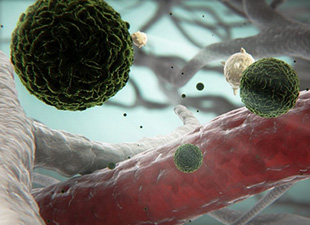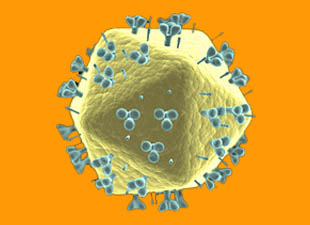
AsianScientist (Sep. 19, 2011) – Efforts to create an effective vaccine against the potentially fatal Hepatitis C virus (HCV) have received a major boost following the discovery of two weaknesses within the virus.
Hepatitis C virus infection is a global pandemic with more than 120 million people infected worldwide, including some 200,000 Australians. The virus causes progressive liver disease leading to cirrhosis, liver failure, and cancer.
Current antiviral treatments are arduous, costly, and only partially effective. At present, no vaccines are available due to the many different strains of the virus.
However, with the discovery of two ‘Achilles’ heels’ within the virus discovered by medical researchers from the University of New South Wales (UNSW), vaccine developers can now focus their attentions on the most likely avenues for success.
“The first weak point was identified at transmission, when the virus has to survive the transfer from one individual to another,” said team member and virologist Dr. Rowena Bull.
“The second weakness, and surprise finding, was the significant drop in the diversity of the viral variants in each individual studied, occurring about three months after transmission, around the time where the immune system is starting to combat the virus. A lower number of variants means the virus is easier to target.”
These weaknesses were discovered using a new technique called next generation deep sequencing and sophisticated computer analytics.
The team, led by Professor Andrew Lloyd and Associate Professor Peter White, was able to identify the ‘founder’ virus responsible for the initial infection and then track changes within the virus as it was targeted by the immune system.
“To date Hepatitis C has been difficult to target with single interventions because there are many different strains of the virus,” Lloyd said. “In addition, like HIV, the Hepatitis C virus mutates very rapidly and exists as a complex family of mutated viruses within every infected individual, meaning the virus can avoid efforts by the immune system to keep it under control.”
“What’s more, a third of infected people can have an effective immune response that eliminates the virus early on. This means key initial immune responses were difficult to identify and study because early infection and elimination can go unrecognized.”
Professor Lloyd said work is now underway to identify the key immunological features of the founder viruses in order to guide new vaccines.
The work has been published in the journal PLoS Pathogens, and can be found at: Bull R et al. (2011) Sequential Bottlenecks Drive Viral Evolution in Early Acute Hepatitis C Virus Infection.
——
Source: University of New South Wales.
Disclaimer: This article does not necessarily reflect the views of AsianScientist or its staff.












